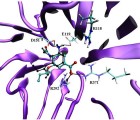BACKGROUND:
A substantial recrudescent wave of pandemic influenza A/H1N1 that began in December 2011 is ongoing and has not yet peaked in Mexico, following a 2-year period of sporadic transmission. Mexico previously experienced three pandemic waves of A/H1N1 in 2009, associated with higher excess mortality rates than those reported in other countries, and prompting a large influenza vaccination campaign. Here we describe changes in the epidemiological patterns of the ongoing 4th pandemic wave in 2011-12, relative to the earlier waves in 2009. The analysis is intended to guide public health intervention strategies in near real time.
METHODS:
We analyzed demographic and geographic data on all hospitalizations with acute respiratory infection (ARI) and laboratory-confirmed A/H1N1 influenza, and inpatient deaths, from a large prospective surveillance system maintained by the Mexican Social Security medical system during 01-April 2009 to 10-Feb 2012. We characterized the age and regional patterns of A/H1N1-positive hospitalizations and inpatient-deaths relative to the 2009 A/H1N1 influenza pandemic. We also estimated the reproduction number (R) based on the growth rate of the daily case incidence by date of symptoms onset.
RESULTS:
A total of 5,795 ARI hospitalizations and 186 inpatient-deaths (3.2%) were reported between 01-December 2011 and 10-February 2012 (685 A/H1N1-positive inpatients and 75 A/H1N1-positive deaths). The nationwide peak of daily ARI hospitalizations in early 2012 has already exceeded the peak of ARI hospitalizations observed during the major fall pandemic wave in 2009. The mean age was 34.3 y (SD=21.3) among A/H1N1 inpatients and 43.5 y (SD=21) among A/H1N1 deaths in 2011-12. The proportion of laboratory-confirmed A/H1N1 hospitalizations and deaths was higher among seniors >=60 years of age (Chi-square test P<0.001) and lower among younger age groups (Chi-square test, P<0.03) for the 2011-2012 pandemic wave, compared to the earlier waves in 2009. The reproduction number of the winter 2011-12 wave in central Mexico was estimated at 1.2-1.3, similar to that reported for the fall 2009 wave, but lower than that of spring 2009.
CONCLUSIONS:
We have documented a substantial and ongoing increase in the number of ARI hospitalizations during the period December 2011-February 2012 and an older age distribution of laboratory-confirmed A/H1N1 influenza hospitalizations and deaths, relative to 2009 A/H1N1 pandemic patterns. The gradual change in the age distribution of A/H1N1 infections in the post-pandemic period is reminiscent of historical pandemics and indicates either a gradual drift in the A/H1N1 virus, and/or a build-up of immunity among younger populations.




